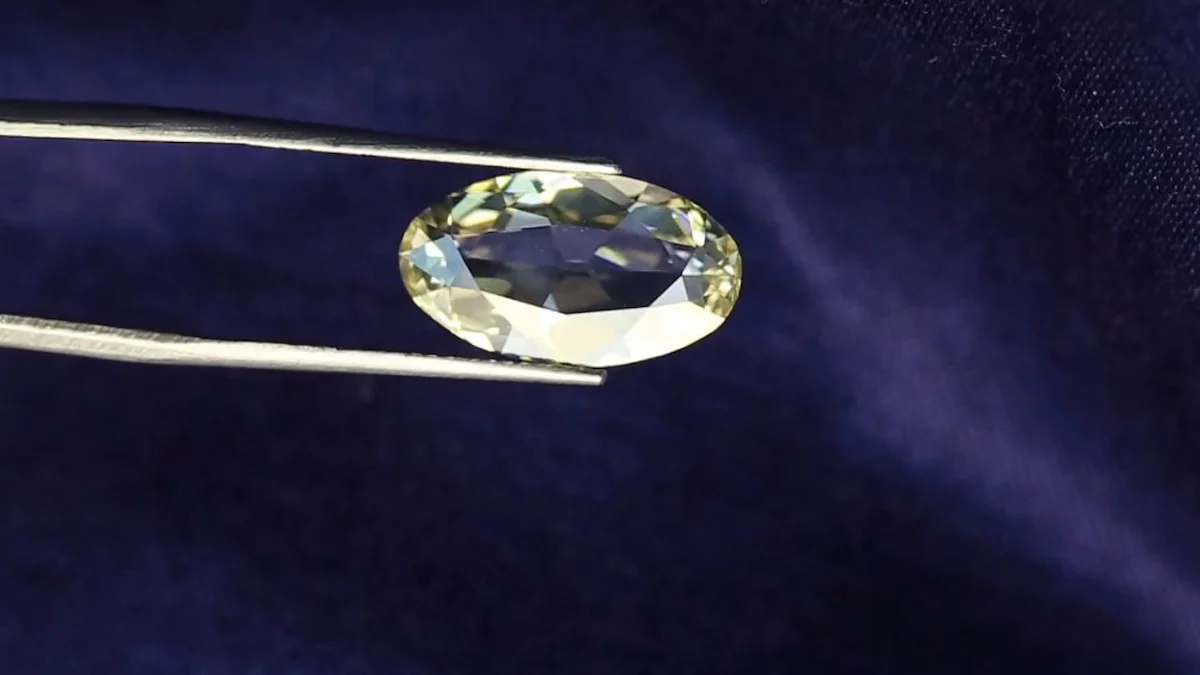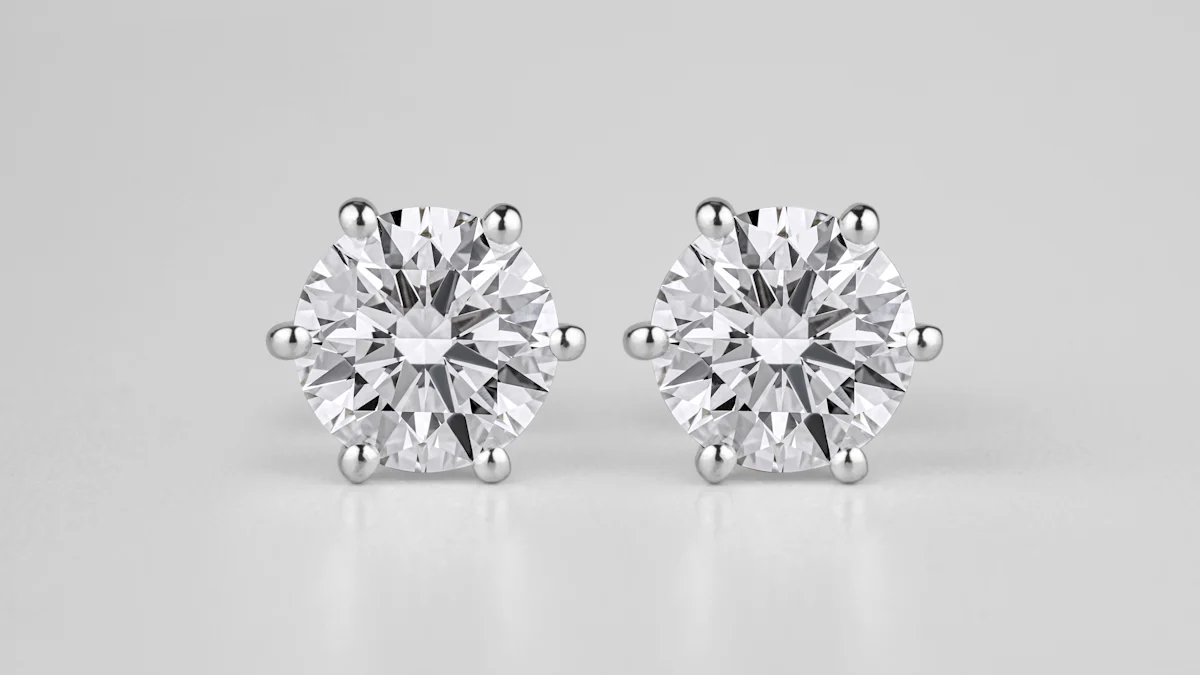How to Test Your Diamond at Home for Authenticity

Verifying the authenticity of your diamond is crucial. With the rise of diamond scams and counterfeit stones, ensuring your gem's genuineness protects your investment. You can perform several simple at-home diamond tests to check if your diamond is real. These tests offer a preliminary assessment, but they aren't foolproof. For absolute certainty, a professional appraisal remains essential. Jewelers have been known to misrepresent diamond quality, so having an expert confirm your diamond's authenticity provides peace of mind. Remember, genuine diamonds hold significant value, both financially and sentimentally.
Simple At-Home Diamond Tests

Testing your diamond at home can be both fun and informative. You can try several simple methods to get a sense of whether your diamond is genuine. Let's dive into some easy diamond tests you can do right in your living room.
The water test
Materials Needed
To perform the water test, you'll need just a few items:
A clear glass
Water
Your diamond
Step-by-Step Instructions
Fill the Glass: Pour water into the glass until it's about three-quarters full.
Drop the Diamond: Gently place your diamond into the water.
Observe: Watch what happens next. A real diamond will sink to the bottom due to its density. If it floats or hovers just below the surface, it might not be genuine.
This diamond test is straightforward and quick. It gives you an initial idea of your stone's authenticity.
The Fog Test
How It Works
The fog test relies on the thermal conductivity of diamonds. Diamonds disperse heat quickly, which is why this test can help you determine authenticity.
Interpreting Results
Breathe on the Diamond: Hold the diamond close to your mouth and breathe on it, like you would to fog up a mirror.
Check the Fog: Observe how long the fog lasts. A real diamond will clear up almost instantly because it doesn't retain heat. If the fog lingers for a few seconds, your diamond might be fake.
This diamond test is simple and doesn't require any special tools. It's a handy way to check your stone's authenticity.
The Newspaper Test
Setup and Execution
For this test, you'll need:
A piece of newspaper with small print
Your diamond
Place the Diamond: Set your diamond face down on the newspaper.
Look Through the Stone: Try to read the print through the diamond.
What to Look For
A genuine diamond will refract light in such a way that you can't see the print clearly. If you can read the text through the stone, it might not be a real diamond. This diamond test helps you understand how light interacts with your gem.
These simple at-home diamond tests provide a good starting point for assessing your diamond's authenticity. While they aren't definitive, they offer valuable insights. Remember, for a conclusive result, consulting a professional is always the best course of action.
Intermediate Diamond Tests
Exploring intermediate diamond tests can give you a deeper understanding of your gem's authenticity. These methods require a bit more equipment but offer valuable insights.
The UV Light Test
Equipment Required
To perform the UV light test, you'll need:
A UV light source
Your diamond
Analyzing Fluorescence
Shine the UV Light: Place your diamond under the UV light.
Observe the Glow: Look for a blue fluorescence. Many genuine diamonds emit a blue glow, but not all do. If your diamond glows blue, it’s likely real. However, a lack of glow doesn't necessarily mean it's fake.
Note: This diamond test isn't foolproof. Combine it with other tests for a more accurate assessment.
The Heat Test
Safety Precautions
Before you start, ensure you have:
A heat-resistant surface
Tweezers
A lighter or match
Caution: Handle with care to avoid burns or damage.
Observing Reactions
Heat the Diamond: Use the tweezers to hold the diamond. Apply heat with the lighter for about 30 seconds.
Watch the Reaction: Quickly drop the heated diamond into cold water. A real diamond will remain intact due to its heat resistance. If it shatters, it might not be genuine.
This diamond test helps you understand the stone's thermal properties. Remember, these tests provide preliminary insights. For definitive results, consult a professional.
Advanced Evaluations with LightMark Jewelry
When you're ready to take your diamond test to the next level, advanced evaluations can provide deeper insights into your gem's authenticity. These methods require specialized tools and a keen eye, often best performed by professionals. However, you can still try them at home with the right equipment.
The Loupe Test
Using a Jeweler's Loupe
A jeweler's loupe is a small magnification device that lets you see the intricate details of your diamond up close. You can find loupes online at reasonable prices, making this diamond test accessible for home use. To start, hold the loupe close to your eye and bring the diamond into focus. Rotate the diamond slowly to examine it from different angles.
Expert Insight: Experts in jewelry and gemology emphasize the importance of using a loupe to inspect diamonds for class and clarity. A loupe allows you to appreciate the internal properties of the diamond, helping you spot poor imitations.
Identifying Inclusions
Real diamonds often have tiny imperfections known as inclusions. These natural flaws are unique to each stone and can help verify authenticity. As you examine your diamond, look for small blemishes or irregularities. A perfectly flawless stone might be a sign of a synthetic or fake diamond.
Expert Insight: Most fake diamonds appear perfect under a microscope, while real diamonds have small inclusions that can't be faked.
The Conductivity Test
Tools Needed
For this diamond test, you'll need a thermal conductivity probe or meter. These tools measure how well a gemstone conducts heat. Diamonds are excellent heat conductors, so they disperse heat rapidly after being warmed.
Expert Insight: Gemologists use thermal conductivity probes to determine a diamond's authenticity. This tool helps them assess the gemstone's ability to conduct heat effectively.
Understanding Conductivity Results
To perform the test, gently warm the diamond and use the probe to measure its thermal conductivity. A genuine diamond will quickly disperse the heat, while a fake might retain it longer. This test provides valuable information about your diamond's properties.
Expert Insight: Jewelers and gemologists rely on specialized tools like thermal conductivity meters to ensure accurate and non-destructive assessments of diamonds.
These advanced diamond tests offer a more thorough evaluation of your gem's authenticity. While they can be performed at home, consulting a professional remains the most reliable method. LightMark Jewelry encourages you to explore these tests and gain a deeper understanding of your diamond's true nature.
Testing your diamond's authenticity at home is a smart move. These diamond tests give you a good starting point. They help you understand your gem better. However, for absolute certainty, you should seek a professional appraisal. Experts can confirm what these diamond tests suggest. Genuine diamonds hold immense value. They offer both financial and sentimental worth. By using these diamond tests, you protect your investment and cherish the true beauty of your stone. Remember, knowing your diamond's authenticity brings peace of mind.
See Also
Tips for Authenticating Genuine Diamond Rings at Home
Methods for Polishing Cultured Diamonds
Insight into Diamond Shapes for Engagement Rings
Comprehensive Analysis of 5 Carat Cultured Diamond Tennis Bracelet

